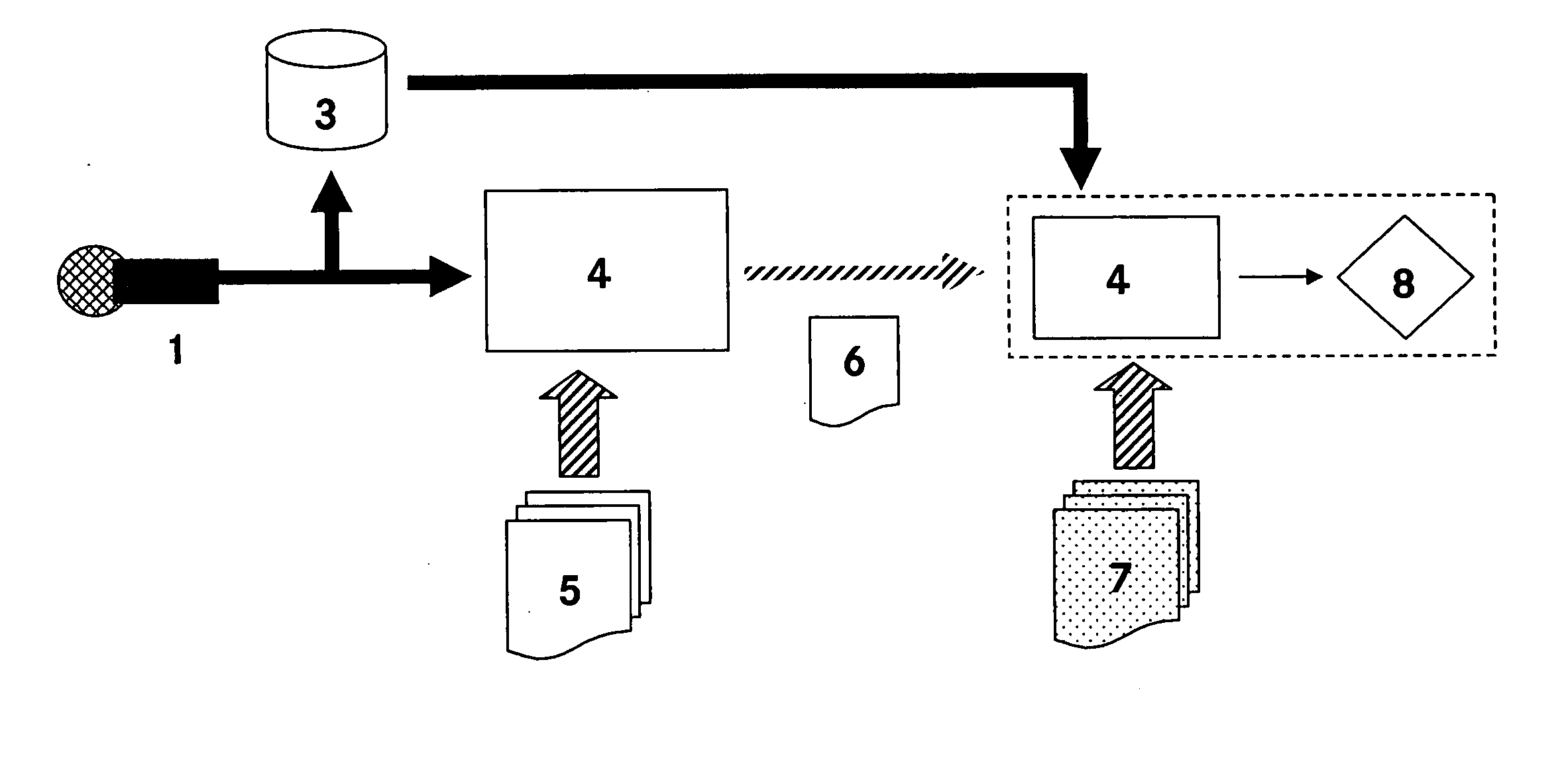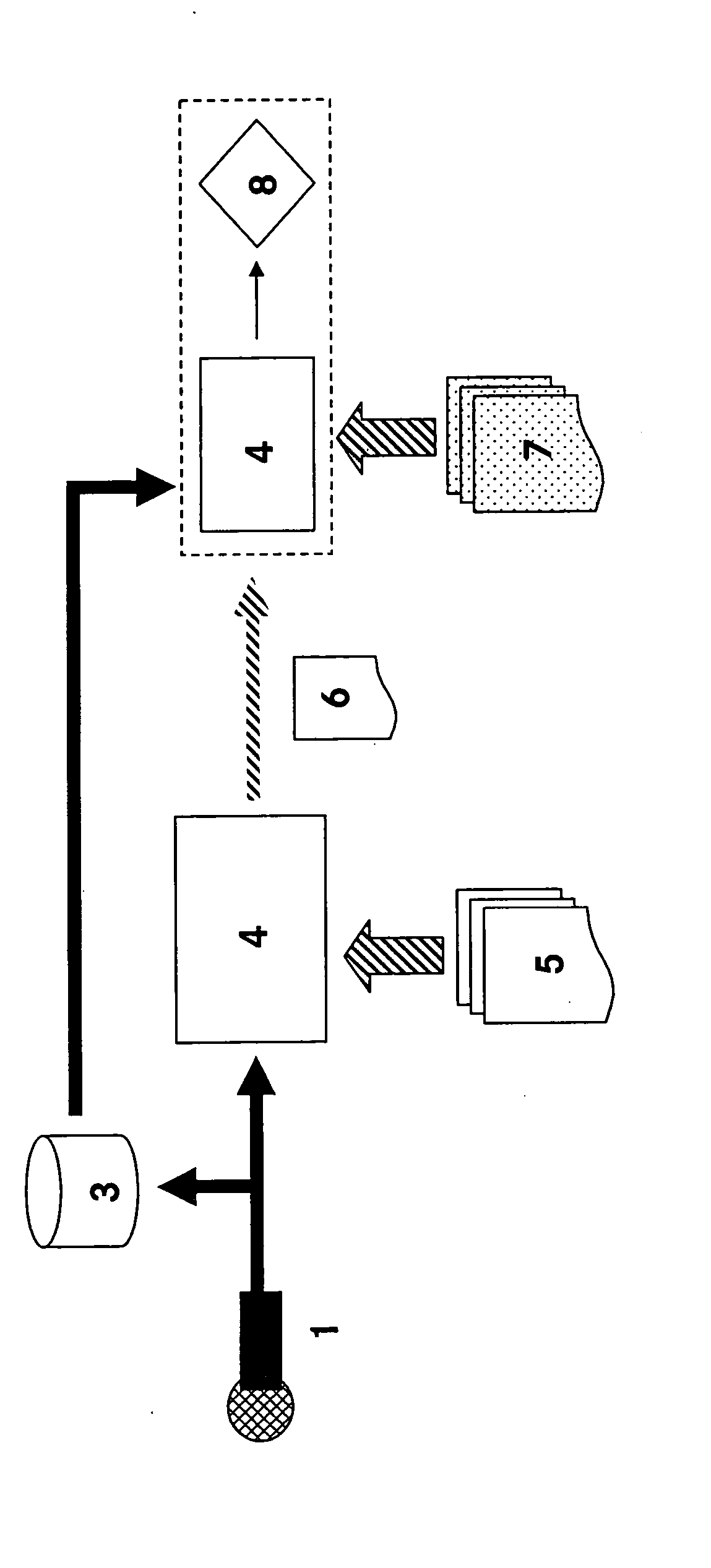Process and device for interaction with a speech recognition system for selection of elements from lists
a speech recognition system and process technology, applied in speech analysis, speech recognition, instruments, etc., can solve the problems of inability to input, dialog dead-end, and inability to frequently input, so as to improve the distinguishing between elements and system commands, and burden the resources of the recognizer.
- Summary
- Abstract
- Description
- Claims
- Application Information
AI Technical Summary
Benefits of technology
Problems solved by technology
Method used
Image
Examples
Embodiment Construction
[0014] In general, the speech recognition system is provided with the speech signal via a microphone 1; of course, in the same way an electronic transmission of the speech signal via a suitable electronic or software technical realized input would also be conceivable. The speech signal supplied to the speech recognition system was, on the one hand, intermediate stored in a memory 3 and, the other hand, supplied to a recognizer 4. The recognizer proceeds on the basis of a vocabulary (list) 5 associated with it, with the list entries to be recognized. As recognition result 6 the recognizer 4 provides at least one element of the vocabulary 5 as list entry to be considered in the following. Of course, the recognizer can also be so designed, that it provides as the result 6 also multiple entries of the vocabulary 5. For this it is conceivable in an advantageous manner to so design the recognizer, that in order to make possible an improved evaluation quality a probability, in particular a...
PUM
 Login to View More
Login to View More Abstract
Description
Claims
Application Information
 Login to View More
Login to View More - R&D
- Intellectual Property
- Life Sciences
- Materials
- Tech Scout
- Unparalleled Data Quality
- Higher Quality Content
- 60% Fewer Hallucinations
Browse by: Latest US Patents, China's latest patents, Technical Efficacy Thesaurus, Application Domain, Technology Topic, Popular Technical Reports.
© 2025 PatSnap. All rights reserved.Legal|Privacy policy|Modern Slavery Act Transparency Statement|Sitemap|About US| Contact US: help@patsnap.com


